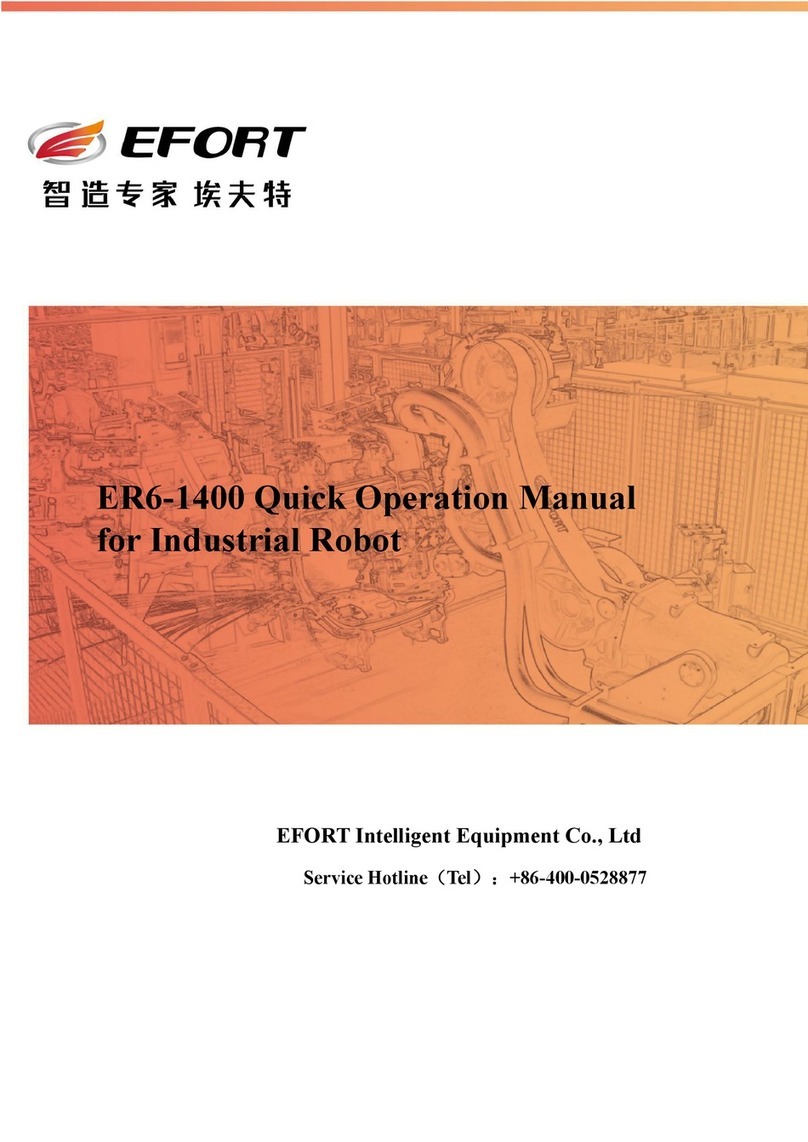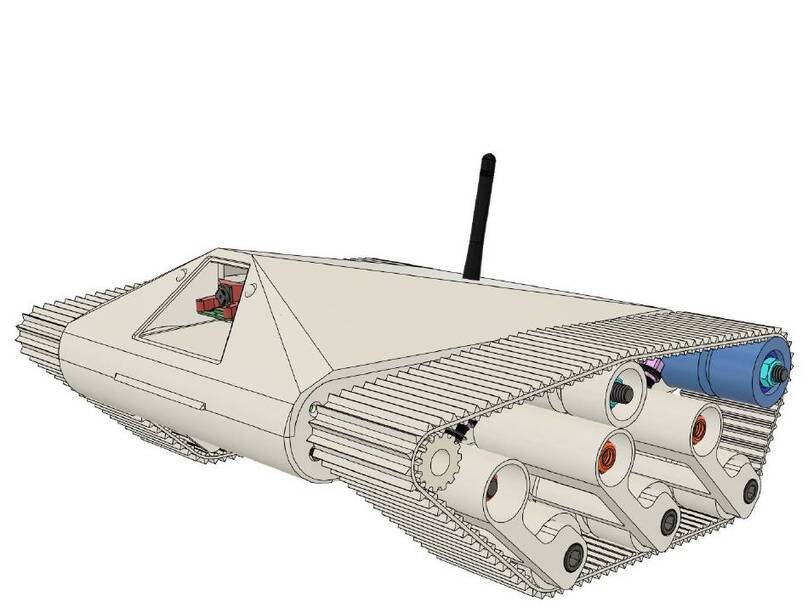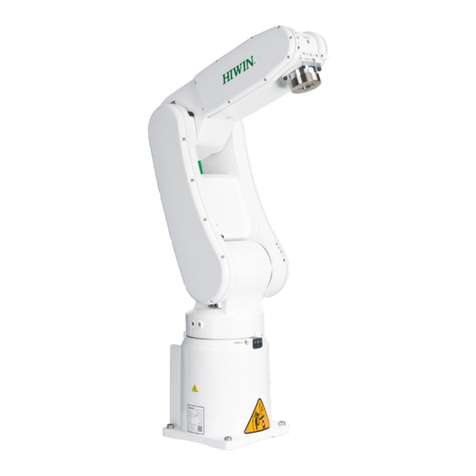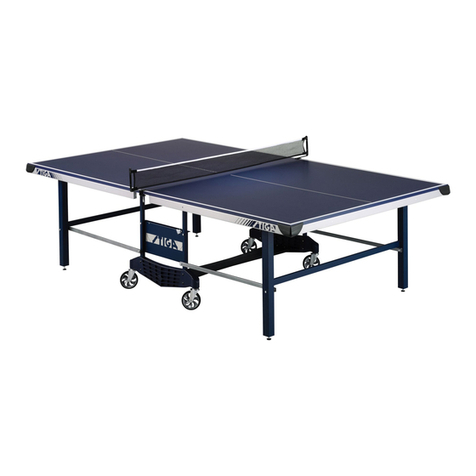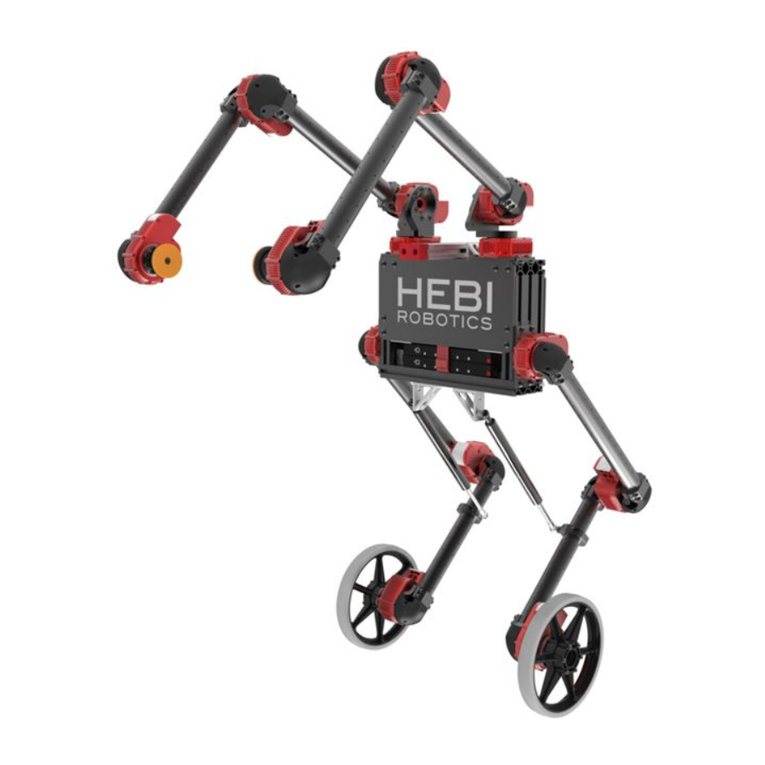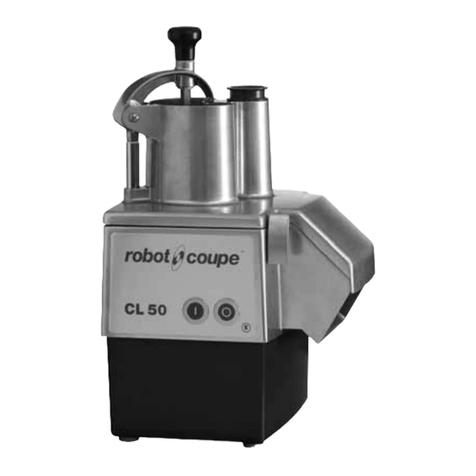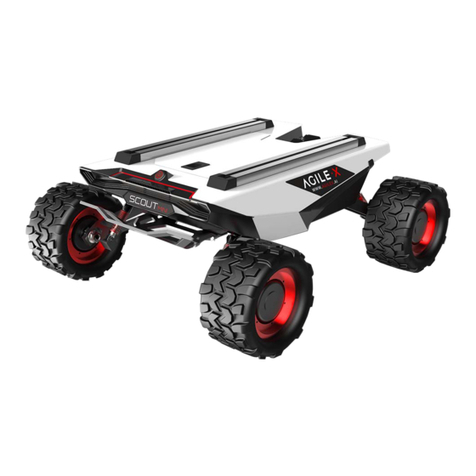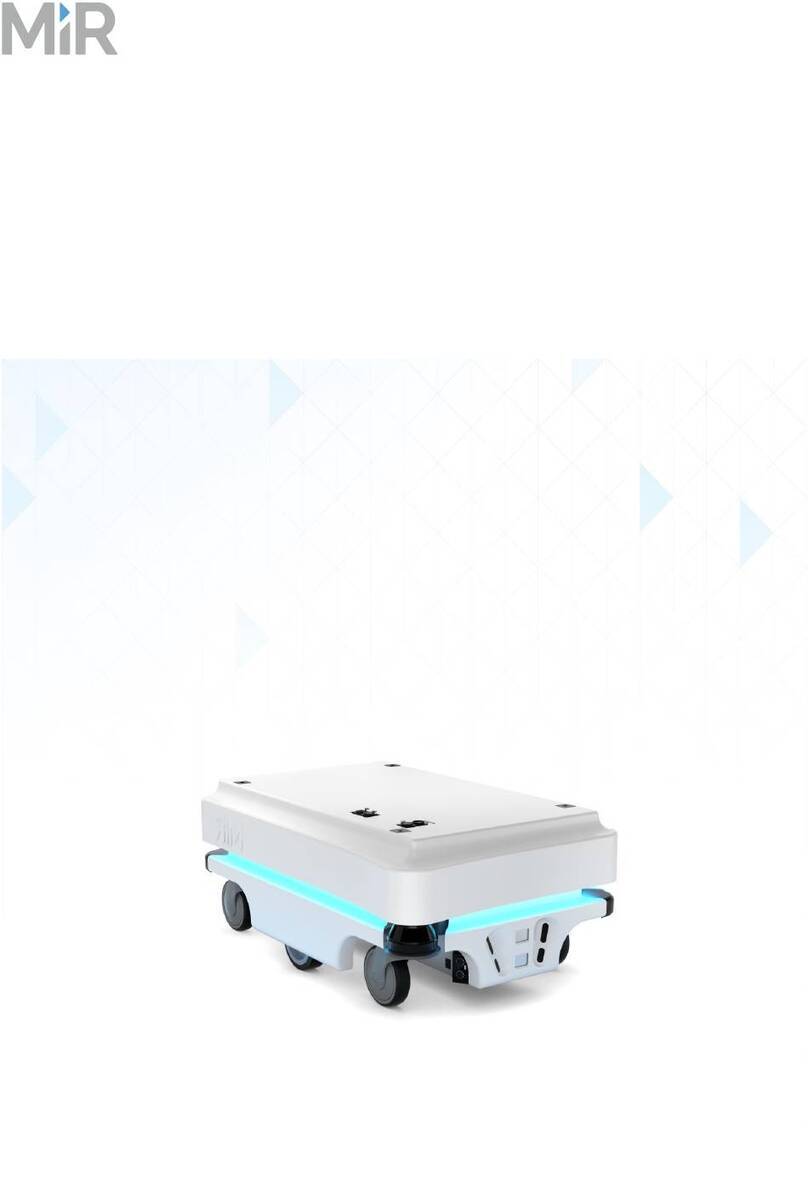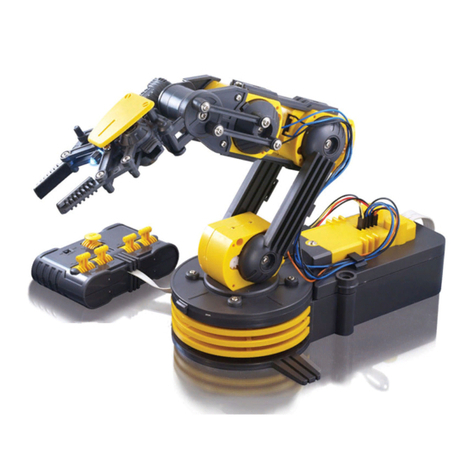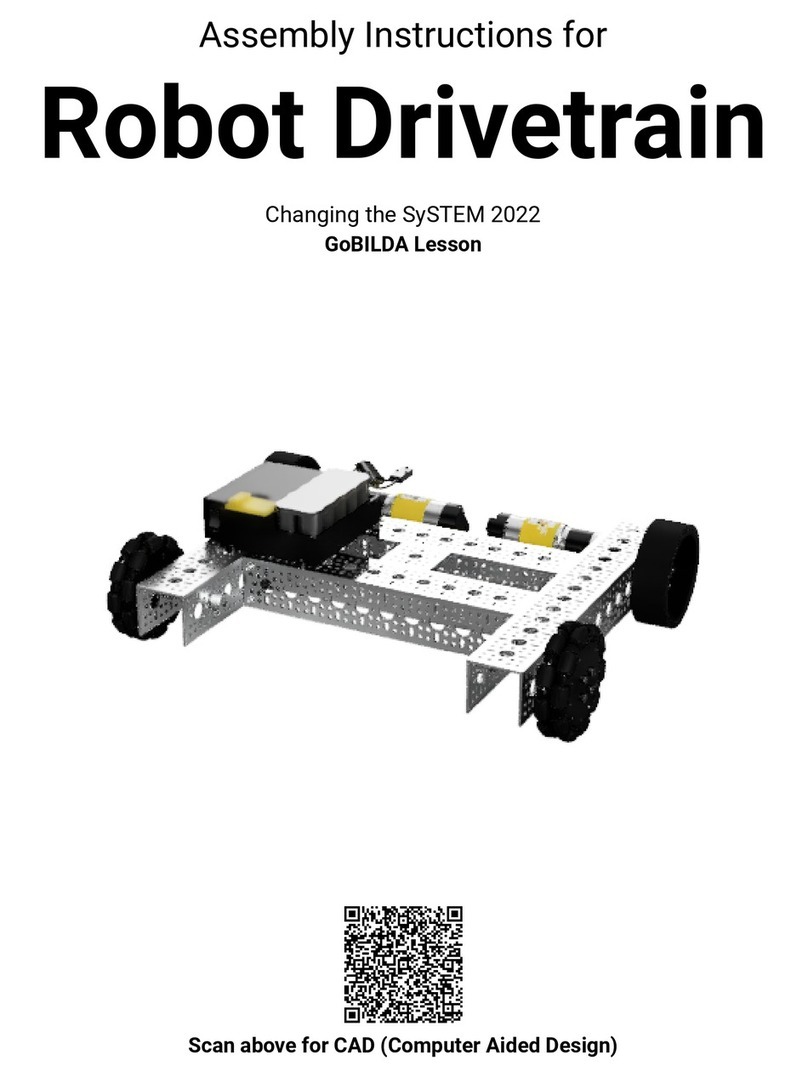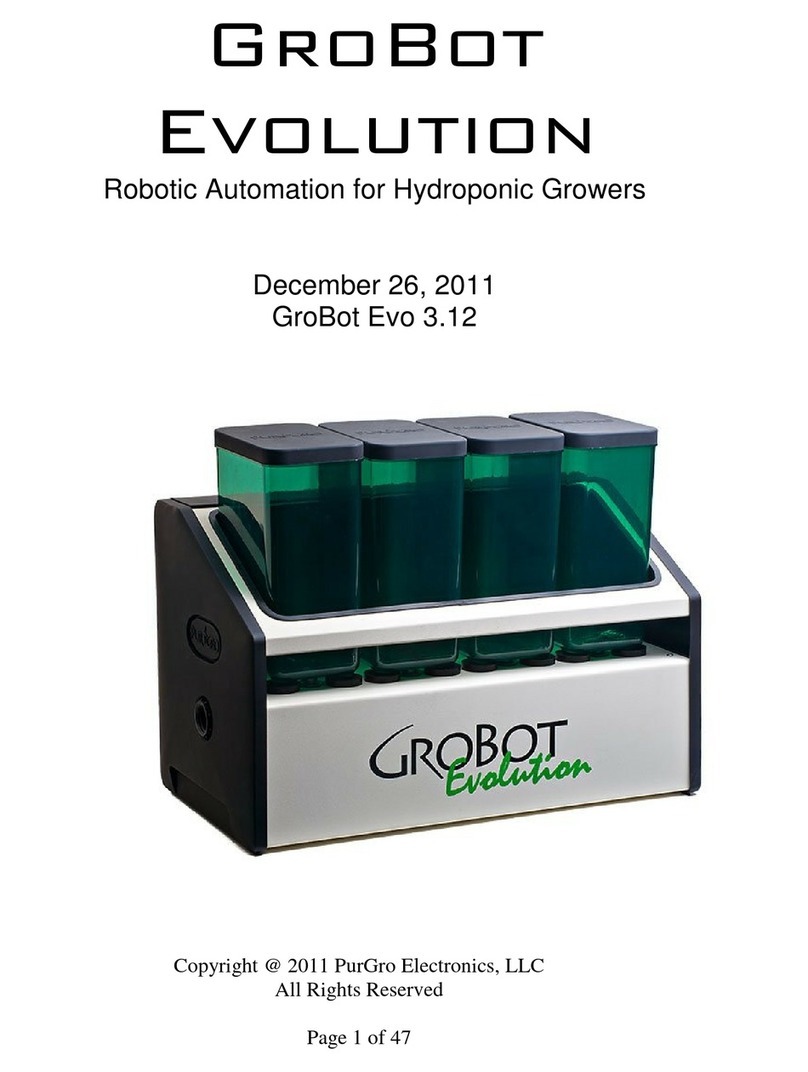Mover-Technology CAMPER TROLLEY 2500 User manual

CAMPER TROLLEY
MOVER-TECHNOLOGY

CAMPER
TROLLEY
(EN)
Model
2500
and
Model
1500
Congratulations
on
the
purchase
of
your
new
Camper
Trolley,
and
thank
you
for
choosing
a
product
from
Mover-
Technology
.
It
is
important
that
you read
this
manual
thoroughly
before using
your
Camper
Trolley. Unauthorized use
or
maintenance
may
result
in
voidance
of
the
guarantee.
WARNING
NOTICE
FOR
BATTERY
Charge
the
battery
completely
before
first
use!
The Lithium
battery
installed in
this
machine has
only
been charged
to
part
of
its
capacity (as
freight
regulations prescribe).
It
is
vital
that
you charge
the
battery
to
its
full capacity before operating
the
machine
to
ensure high performance and long life. Charging
for
the
first
time
may
take
6-8
hours (see recharging
instructions)
.
Always
recharge
fully
after
use
until
the
LED
light
turns
green!
Recharge
Periodically!
If
the
Camper Trolley goes unused
for
more
than
two
months,
it
is
highly
recommended
to
inspect and
charge
the
battery
until
the
LED
on the
charger
changes
from
red
to
green,
in
order
to
maintain
maximum
battery
life and performance.
Do
not
store the Camper Trolley in
direct
sunlight
or
at
high
temperatures.
High
temperatures
may
drain
the
battery
quickly.
Failure
to
follow
these
instructions
will
damage
the
battery
and
void
the
battery's
warranty!
Batteries:
Charging
and
changing
Battery
for
Camper
Trolley
1.
To charge the Camper Trolley
battery,
connect the charger
to
the
Camper
Trolley by placing the
charging plug in the
outlet
on
the
back end cover.
2. The
battery
charger
displays a
constant
red
light
while charging is in progress. Completion
of
battery
charging is indicated
by
a
constant
green
light
.
·
~
"
..
.u
·-
11
Battery
Charger
Charging
Battery
Charger
Fully Charged

Changing
the
remote
control
battery
1. Loosen
the
4 screws on
the
ba
ck
of
the
remote
control
and
remove
the
panel.
2.
Replace
the
old
battery
with
a
new
one
of
the
same
type
.
Remember
to
protect
the
environment
when
disposing
of
batteries-
do
not
dispose
of
them
with
ordinary
household
was
te.
Technical
Data
Model
2500
Model1500
Battery
voltage
14.8
14.8V
(some
versions
may
use
14.4V_l
Batterv
type
Lithium
Lithium
Battery
capacity
Approx.
10
000
mAh
Approx.
5
000
mAh
Battery
operating
Approx
. 30
min
.
operation
Approx.
30
min.
operation
capacity
Battery
charger
100-240
V 2 A
100-240
V 1 A
Remote
control
battery
2 x AA
1.5
Volt
2 x AA
1.5
Volt
Max. load stress
300
ko
300
kg
Speed
unloaded
Approx.
9
m/min.
Approx.
9
m/min.
Speed loaded
Approx.
7
m/min.
Approx.
7
m/min
.
Motor
4 x
DC
motors
2 x
DC
motors
Safety
function
3
min.
Auto
shut-off.
3
min.
Auto
shut-off.
Hauling
capacity
Trailers
up to 2
500
kg
Trailers
up
to
1 500 kg
Caterpillar
tracks
2
with
rubber
profiles
2
with
rubber
profiles
Weight
Approx
.
35
kg
Approx.
20 kg
Contents
of
carton
When
unpacking
the
Camper
Trolle
y,
please check
that
all
parts
are
in
the
carton.
If
any
of
the
items
are
missing:
Contact
your
dealer.
Model2500
Model1500
Operating
Manual 1 1
Camper
Trolley
1 1
Charg_er 1 1
Remote
control
incl.
2x
1 1
AA
batteries
T
ransport
bag 1 1
+ Suspension
fixture
consisting
of
the
following
parts':
Security
ring
'
(cotter)
1 1
Outer
mounting
tube
1 1
Inner
mounting
tube
1 1
Extension
for
inn
er
tube
1 1
Mounting
bracket
for
1 1
inner
tube
Female
for
mounting
1 1
Bracket
Support
plate
for
female
1 0
mounting
bracket
Clamp 1 0
+
Screws
and
nuts
for
suspens
ion
f1tt1ng
.
1
Not
applicable
in
Australia
and New Zealand.
12

EC
DECLARATION
OF
CONFORMITY
No.:
1
The
manufacturer,
and/
or
any
authorized
representative
of
the
manufacturer
within
the
European
Community,
hereinafter
referred
to
as
Mover-Technology ApS
Dagmarsgade
17,
DK
-
6760
Ribe
declares
that
the
products
Camper
Trolley CT1500 and
Camper
Trolley
CT2500
have
been
manufactured
in
conformity
with
the
provisions
of
the
following
EC
directives
·
98/37/EC-
The Machinery Directive
·
99/5
/
EC-
The
R&TTE
Directive
·
2004
/108/
EC-
The
EMC
Directive
·
2002/95/EC-
The RoHS Directive
·
2002/96/EC
-The
WEEE
Directive
and
that
all
standards
mentioned
overleaf
have
been
applied.
The
last
two
digits
of
the
year
of
the
CE
approval:
12
13

Reference
to
standards
(or
parts
hereof)
applied
in
connection
with
this
Declaration
of
Conformity:
harmonized
standards:
EN
953:
2003 Safety
of
Machinery-
Guards-
General
requirements
for
the
design and
construction
of
fixed and
movable
guards
EN
954-1:2003
Safety
of
Machinery.
Safety-related
parts
of
control systems. Part
1:
General
principles
for
design
EN
1037:1998
Safety
of
Machinery-
prevention
of
unexpected
start-up
EN
12100-1:2005
Safety
of
Machinery-
Basic concepts and general principles
for
design-
Part 1: Basic
terminology,
methodology
EN
12100-2:2005
Safety
of
Machinery-
Basic concepts and general principles
for
design-
Part 2: Technical principles
EN
13850:2006
Safety
of
Machinery-
Emergency
stop-
Principles
for
design
EN
13857:2008
Safety distances
to
prevent
hazard zones being reached by
upper
and
lower
limbs
EN
60204
-
1:2006
Safety
of
Machinery -Electrical
equipment
of
machines -Part
1:
General
requirements
Mover-Technology
ApS
Dagmar
s
gade
17, DK-6760 Ribe,
Denma
rk
14

Before
Use:
Preparing
the
Camper
Trolley
Checking
the
status
1. Unpack
the
camper
trolley
and check
that
the
camper
trolley
is clean and
not
broken
2.
Make sure
the
camper
trolley
battery
is charged according
to
instructions
Mounting
the
suspension
fitting
-
standard
bracket
If
there
is a plastic
cover
over
the side
member
system on the caravan,
it
can
be
helpful to remove
it
while
mounting
the
suspension
fitting.
Mounting
bracket
for
inner
Al:
Outer
mounting
tube
.
~~m_o_u_n_ti_n_a_t_ub_e
__________
~
=i
Inne
r
extension
tube
Female
for
mounting
bracket
r
"'
l A2:
Inner
mounting
tube
1. When
mounting
the
suspension
fitting
from
the
Camper
Trolley
onto
the
caravan,
start
by
gliding
the
two
mounting
tubes,
Aland
A2,
together,
and
then
placing
them
up inside
the
side members.
2.
Next, loosely screw
on
the
mounting
bracket
to
the
inner
mounting
tube,
and screw
the
female piece to
the
mounting
bracket.
If
there
are
larger
distances between side
members,
place
the
extension
tube
inside
the
inner
mounting
tube.
The
illustration
below
shows
the
assembled
suspension
fitting
mounted
on
the
side
membersl:
3. Slide
the
entire
suspension
fitting
as
far
back on the side
members
as possible
to
put
maximum
weight
on the
Camper
Trolley.
Do
not
push the suspension
fitting
so
far
back
that
mounting
and removing
the
Camper
Trolley
becomes
difficult.
The
following
illustration
shows
the
optimal
placement
of
the
suspension
fitting
on
the
caravan:
4:-
Push the
Outer
and
Inner
Mounting Tube
as
far
from
each
other
as possible,
towards
the sides
of
the
side
members.
Tighten
the
left
and
right
brackets
so
that
the
bent
undersides
of
these
are
po
sitioned precisely against
the
outer
side
of
the
side
members.
Make sure
that
the
bolts are
tightened
to
the
maximum
extent
.
(If
the caravan's bearers are
extremely
narrow,
and
the
mounting
tubes
cannot
be
pressed
far
enough
together
upon
mounting,
you can use a hacksaw to shorten
mounting
tube
A2. There
must
be
minimum
10-15
em
inner
overlap
of
the
Outer
and
Inner
mounting
tubes.)
2 Clamp and
support
plate
for
female
mounting
bracket
only come wi
th
Model 2500.
15

5. Once
the
suspension
fitting
is adjusted and fastened to
the
side
members,
tighten
the
clamp
bolt
into
the
side
of
the
inner
mounting
tube.
Mounting
of
Camper
Trolley
1. When
mounting
the Camper Trolley on
the
suspension
fitting,
adjust
the
height
of
the
suspension
fitting
using the
nose/jockey
wheel.
2.
The suspension
fitting
mounted
on
the
Camper Trolley
fits
into a
slit
on
the
underside
of
the
mounting
fitting
on
the
left
side (seen from
the
ball catch) and
can
be
pushed into place in
this
slot.
3.
After
pushing the Camper Trolley into
the
slot in the mounting
fitting,
attach
the
factory-provided
cotter
ring,
which locks the Camper Trolley
in
place.
4.
After
attaching
the
cotter
ring to the Camper Trolley, raise
the
support
wheel to its
highest
position, and release
the
hand brake. This shifts
the
weight
of
the
caravan onto the Camper Trolley.
You
are now ready to
tow
your
caravan.
Illustration
of
the
Camper
Trolley
mounted
on
the
side
members
of
the caravan:
Using
the
Camper
Trolley
VARIANTS
CT2500
is
equipped
with a
tall
or
low
tower
with
ball
joint
CT2500 Tall
tower
CT2500
Height
is
adjustable
Low
tower
SOME ADVICE ON SAFETY AND OPEitATION BEFORE STARTING
1. Familiarize
yourself
with
the
operating manual, and practice
maneuvering
the caravan
on
a
flat
surface before
attempting
to
maneuver
it
on
sloping surfaces. We recommend
testing
your
Camper Trolley
at
home
-also
without
a caravan
-so
you can
try
out
the
different
maneuvering options.
2.
Load:
The Camper Trolley is designed
for
moving caravans weighing up to approx. 2500 kg (Model CT2500)
or
1500 kg (Model CT1500).
In
order
for
Camper Trolley to function
optimally,
the
ball
weight
must
be
at
least
75-85
kg. This ball
weight
creates
about
120-150
kg
of
pressure
on
the
Camper
Trolley. Too
little
weight
on
the
Camper
Trolley
may
result
in
poor
gripping and
poor
towing
results. Greatest pressure is achieved by
mounting
the
Camper :rrolley
as
far
back on
the
side
members
as
possible.
3.
level
surfaces:
To
ensure
optimal
transfer
of
the
Camper Trolley's
power
to the surface
it
is
to operate on,
the
Camper
Irolley
must
move in
the
direction
of
the
antenna, i.e.
forward
. (Except
on
sloping surfaces, see below).
4.
Sloping
surfaces:
OperatinQ the Camper Trolley on sloping surfaces
may
shift
and decrease
the
pressure on
the
Camper Trolley, resulting in
poor
contact
with
the
terrain.
When using
your
Camper-Trolley to
move
your caravan
or
trailer
UP
a slope
or
edge,
the
CT
must
PUSH
the
caravan up
the
slope-
if
necessary, one wheel at a
time.
Optionally, use a
ramp.
o When moving
your
caravan DOWN a slope
the
CT
must
LEAD
the
caravan DOWN the slope.
ATTENTION:
If
going downhill1
it
is
very
important
that
the Camper Trolley
is
turned
180 degrees,
so
that
it
is
moving in reverse, down the hill, i.e. with the antenna opposite the maneuvering direction and facing
the
caravan. This is
important
, as the Camper Trolley
might
otherwise
tip
over
forward.
Special
precaution
5.
Be
aware
that
if
towing down
very
steep inclines
or
on
w
et,
oily surfaces,
it
may
be necessary
to
use
the
hand
brake on
your
caravan
during
operation
if
the
Camper Trolley is unable to hold
the
caravan
or
the caterpillar
tracks
cannot adequately
grip
the
surface.
16

Activating
and
Pairing
the
Camper
Trolley
with
the
remote
control
The
Camper
Tr
olley
comes
pre-paired
with
the
remote
controL
Turn
on
the
Camper
Trolley
by
simply
pressing
the
Start/Stop
button
for
maximum
1-2
seconds.
Turn
on
the
remote
control
by
pushing
the
forward
button
(t ) once.
The
Camper
Trolley
is
now
ready
to
use.
IMPORTANT
Re-pairing
the
Camper
Trolley
1.Turn on the Remote Control by pushing the Forward button (
t)
once. The green
light
on the
Remote Control will turn on.
2.Turn on the
Camper
Trolley by
clicking
the
Start/Stop
button.
The
green
light
on the
Camper
Trolley
will turn on.
3.Now
simultaneously
press and hold the Turn Right
button(-+)
on
the Remote
Control
and
press and hold the
Start/Stop
button on
the
Camper
Trolle
y,
both LED lights
start
to
blink
for
8
seconds,
after
which the LED lights will
light
constantly. Now
the
Camper
Trolley and
Remote
Control
have been
re-paired
and are ready to use.
If
this
pairing
procedure
is
unsuccessful,
the Remote Control will turn
off
automatically
in around 15
seconds,
and
the
user
needs to redo the
procedure
from step
1.
The start/stop button and operating
status
indicator
are
located
on
the
front
of
the
Camper
Trolley
(The
diode
li
ghting
can
be
difficult
to
see
in
strong
sunlight):
Maneuvering
the
Camper
Trolley
The maneuvering
buttons
on
the
remote
control:
Forward:
(f);
Turn
right:(
-+)
Backward:
( /
);Turn
left:
(
<--)
Battery
Indicator
The
battery
indicator
shows
the
Camper
Trolley's
remaining
battery
status.
If
the
capacity
is
too
low,
the
CT
may
not
respond
correctly.
If
the
indicator
itself
weakens,
the
remote
control
battery
needs
to
be
re laced
otherwise
the
CT
ma
not
res
ond
correct/
.
The
Camper
Trolley
logo on
the
remote
contro
l
must
always
point
toward
the
trolley.
Use
both
hands
on
the
remote
control,
and hold
it
horizontally
during
use.
Forward:
To
move
forward,
in
the
same
direction
as
the
antenna,
hold
down
forward
button
(i).
Backward:
To
move
backward/reverse,
hold down
the
back
button
(J.).
Turn:
To
turn, hold down the forward
(t)
or
backward
(t)
button whi
le
at
the
same time holding down one
of
the
turn
buttons
of
the
remote
control
to
turn
right
(-+)
or
left
(~).The
Camper
Trolley
will
only
turn
if
you
first
hold
the
forward
or
backward
button,
followed
by a
turn
button.
Stop:
To stop
the
camper
trolley
from
moving,
simply
release
the
forward
or
backward
button.
17

Deactivating
the
Camper
Trolley
The Camper Trolley shuts
off
automatically
after
3
minutes
if
the
remote
control
is
not
activated
within
that
period.
If
you do
not
want
to
wait
3
minutes
until
the
Camper Trolley shuts
off
automatically, press
the
start/stop
button
to disconnect the power
manually
on the Camper Trolley. Turn
off
the
Remote Control
LED
light by holding down
the Right Button
(-7),
and then pressing
the
left
button
at
the same
time(
~)
After
Use:
Detaching,
Cleaning,
Storing,
and
Maintenance
Detaching
the
Camper
Trolley
Never leave
the
Camper Trolley
mounted
to
the
caravan while towing
the
caravan behind a car.
It
is
important
that
you always detach
the
Camper Trolley
after
use and place
it
in the storage box/bag
together
with
the
remote control.
Wh
en
you have finished towing the caravan and you
wa
nt
to disconnect
the
Camper
Tr
o
ll
ey, pull the parking brake and
adjust
the
nose/jockey
wheel
so
that
the
caravan
is
slightly elevated. This takes
th
e
weight
off
the
Camper Trolley.
Remove
the
cotter
ring and use
the
r
emote
control to move
the
Camper Trolley
out
of
the lock
fitting
(or
pull it
out
ma
n
ually).
Cleaning
If
you have used
the
Camper
Tr
ol
ley in
wet
or
dirty
condition
s,
you can clean
it
in
the
following
manner:
Remove pebbles, clay, grass and
the
like from
the
belts. Then give
it
a gentle cleaning using a small
amount
of
clean
water
and a brush
or
cloth.
Do
not
use soap
or
cleansing agents
or
a high-pressure cleane
r.
Storage
Put the Camper Trolley in
the
transport
box/bag delivered from the factory. If
the
storage box/bag should become
damaged, discard it. A new plastic storage
box/bag
may
be
obtained from your
Camper
Trolley
distributor.
Store
the
Camper Trolley in dry,
frost-free
conditions.
Do
not
store
the
Camper Trolley
in
direct
s
unlight
or
at high
temperat
ur
es. High
temperatures
may
drain
the
battery
quickly.
Maintenance
The
Ca
mper
Trolley should
be
operated
at
least every second
month
in order
to
keep the
battery
healthy.
If
the
Camper Trolley goes unused
for
more
than
two
months,
it
is
highly
recommended
that
you operate
the
Camper
Trolley
for
a
short
while and then charge
the
battery
until the
LED
on the
charger
turns
green, in or
der
to
maintain
maximum
battery
life and performance.
Repair
Please
contact
your
local deal
er
for
repair
i
ss
ues.
Complaints
In case
of
any claim regarding
this
product, please contact
your
dealer and provide information about: The cause
of
the
error
or
defect and the date
of
purchase. Present
your
invoice
as
proof
of
purchase.
Children
Note
that
ch
ildren
under
age 3 should not play
with
any plastic bags
or
small
parts
from the Camper Trolley, as
there
is
a
risk
of
suffocation. Children should
not
tow
the
caravan
with
the remote control.
Mover-Technology
ApS
Dagmarsgade 17, DK-6760 Ribe,
Denmark
www.move
r-t
echnology.com
18
This manual suits for next models
1
Table of contents
Other Mover-Technology Robotics manuals

